The Em Guitar chord, also known as the E minor chord, is a foundational chord for any aspiring guitarist. Renowned for its simplicity and versatility, the Em chord is often one of the first chords beginners learn. This guide will walk you through how to play the Em chord, offering practice tips and exploring its role in music.
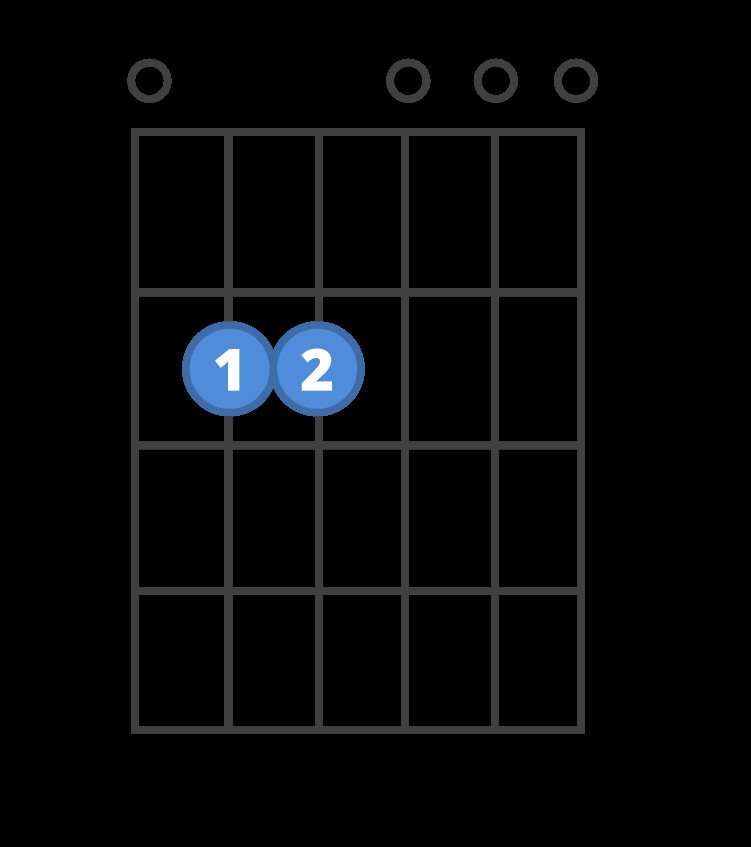 Chord diagram for the Em guitar chord.
Chord diagram for the Em guitar chord.
Simple Steps to Play the Em Chord
The beauty of the E minor chord lies in its ease of formation. Requiring only two fingers, it’s a breeze to learn and a stepping stone to more complex chords. Here’s how to get your fingers in the right place:
- Index Finger Free: Keep your first finger (index finger) free. You won’t need it for this chord, and keeping it available will be beneficial for quicker transitions to other chords later on.
- Middle Finger Placement: Place your second finger (middle finger) on the 5th string (A string) at the 2nd fret.
- Ring Finger Follows: Position your third finger (ring finger) on the 4th string (D string) also at the 2nd fret.
- Strum it All: Strum all six strings from the thickest (low E) to the thinnest (high e).
Many beginners wonder if they can use their first and second fingers for this chord. While technically possible, using your middle and ring fingers as described above offers a strategic advantage. This fingering leaves your index finger free to quickly move to nearby chord shapes like the C major, A minor, or D major, streamlining your chord changes.
Em Chord: A Minor Variation of E Major
If you’re already familiar with the E major chord, you’re halfway to mastering Em! The Em chord is closely related to E major, with a subtle but significant difference of just one finger.
Em (E minor)
 Chord diagram for the Em guitar chord.
Chord diagram for the Em guitar chord.
Two fingers are used to form the E minor chord.
E (E major)
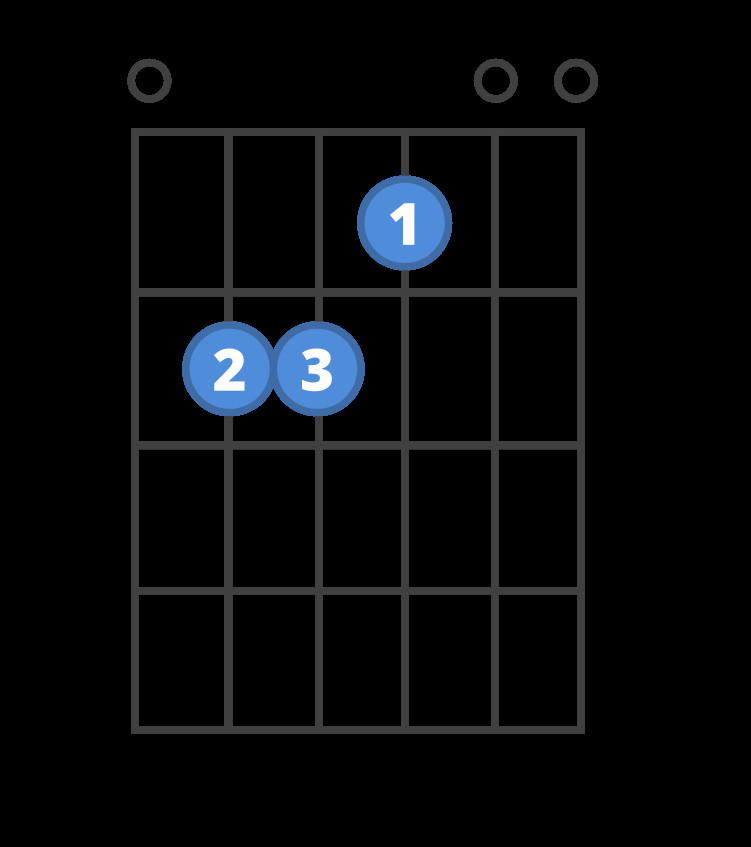 Chord diagram for the E guitar chord.
Chord diagram for the E guitar chord.
Three fingers are used to form the E major chord.
A Touch of Music Theory
The distinction between E major and E minor comes down to a single note. In the E major chord, the third string (G string) is raised by a half step to G#. This alteration creates a major third interval, defining the major quality of the chord. In contrast, the Em chord retains the natural G note, resulting in a minor third interval and thus, its minor sound. This seemingly small change dramatically alters the chord’s character, giving E minor its characteristically melancholic or introspective feel compared to the brighter E major.
Effective Practice Techniques for the Em Chord
To solidify your Em chord and commit it to muscle memory, consistent practice is key. The “On-Off Drill” is a highly effective technique for memorizing chord shapes:
- Form the Em Chord: Place your fingers in the Em chord shape.
- Strum and Count: Strum the chord for four beats, counting aloud (1, 2, 3, 4).
- Release and Rest: Remove your fingers from the strings for four beats, continuing to count.
- Repeat: Replace your fingers back into the Em chord shape and repeat the cycle.
This on-off rhythm helps your brain internalize the finger positions and transitions. The four-beat intervals provide focused time to ensure accurate finger placement.
Once you’re comfortable with the On-Off Drill for Em in isolation, challenge yourself by incorporating chord switching. Practice transitioning between Em and another chord, such as the G chord.
Em (E minor)
 Chord diagram for the Em guitar chord.
Chord diagram for the Em guitar chord.
Diagram of the E minor chord for guitar practice.
G (G major)
 Chord diagram for the G guitar chord.
Chord diagram for the G guitar chord.
Diagram of the G major chord for guitar practice.
Smooth transitions between chords are crucial for fluid playing. Focus on minimizing pauses and maintaining a steady rhythm during chord changes.
Jam Along with the Em Chord
Put your Em chord into practice with a common chord progression! The Em chord sounds fantastic alongside G, D, and C major chords. Try playing along with a simple progression like: Em – G – D – C.
Spend a few minutes cycling through these chords, concentrating on maintaining a consistent rhythm and smooth chord changes. This practical application will solidify your Em chord and improve your overall playing fluidity.
Expanding Your Chord Palette with Em and Similar Chords
Once you’ve mastered Em, you’ll find it opens the door to a world of musical possibilities. The chords that harmonize well with Em are plentiful, allowing you to create countless songs and progressions. Consider exploring these chords that sound great with E minor:
[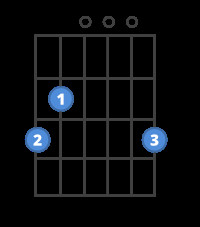 Chord diagram for the G guitar chord.
Chord diagram for the G guitar chord.
HOW TO PLAY
G Major](/chords/g-major)
[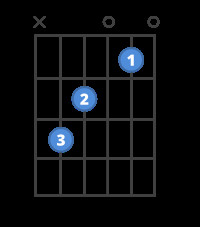 Chord diagram for the C guitar chord.
Chord diagram for the C guitar chord.
HOW TO PLAY
C Major](/chords/c-major)
[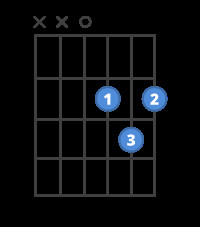 Chord diagram for the D guitar chord.
Chord diagram for the D guitar chord.
HOW TO PLAY
D Major](/chords/d-major)
[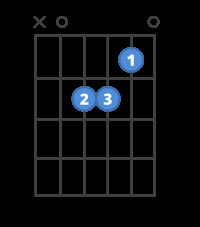 Chord diagram for the Am guitar chord.
Chord diagram for the Am guitar chord.
HOW TO PLAY
A Minor](/chords/a-minor)
Further expand your repertoire by learning other easy minor chords, which share a similar sonic character to Em and are equally valuable for beginner guitarists:
[ Chord diagram for the Am guitar chord.
Chord diagram for the Am guitar chord.
HOW TO PLAY
A Minor](/chords/a-minor)
[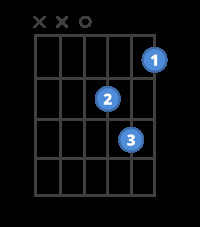 Chord diagram for the Dm guitar chord.
Chord diagram for the Dm guitar chord.
HOW TO PLAY
D Minor](/chords/d-minor)
Discover More with ChordBank
Expand your guitar journey with ChordBank’s comprehensive resources:
[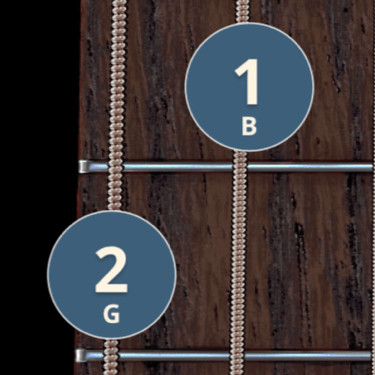
Chords »
Explore thousands of guitar chords in ChordBank’s extensive library.](/guides/chords/)
[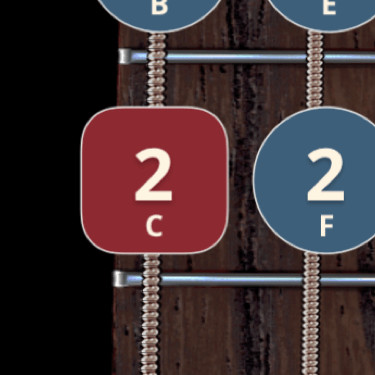
Scales »
Master major, minor, pentatonic scales and modes with ChordBank.](/guides/scales/)
[
Lessons »
Learn from professional musicians with ChordBank’s curated lessons.](/guides/lessons/)
[
Metronome »
Practice with perfect timing using ChordBank’s metronome.](/guides/metronome/)
[
Tuner »
Keep your guitar in tune with ChordBank’s accurate tuner.](/guides/tuner/)
[
Reverse Chord Finder »
Discover new chords using ChordBank’s reverse chord finder.](/guides/reverse/)
[
Backing Tracks »
Jam along to backing tracks in any key and tempo.](/guides/backing-tracks/)
[
Saved Chords »
Save and organize your favorite chords for practice and songwriting.](/guides/saved/)
[
Flashcards »
Practice chords effectively with AI-powered Flashcards.](/guides/flashcards/)
Take Your Em Chord Skills Further
[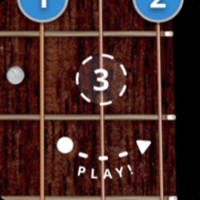
Start playing the Em chord »
Chord Coach](https://www.chordbank.com/o/chordtraining?gtx=Em)
[
Learn the Em chord »
Video – 0:50](https://www.chordbank.com/o/rkvid?vid=Em)
Learn more about guitar from experts like Anna Freitas, a Berklee College of Music graduate and experienced guitar instructor.
The Em guitar chord is a cornerstone of guitar playing. With its easy fingering and musical versatility, mastering the Em chord is a rewarding step in your guitar journey. Keep practicing, explore its musical applications, and enjoy the rich sound of the E minor chord in your playing!
